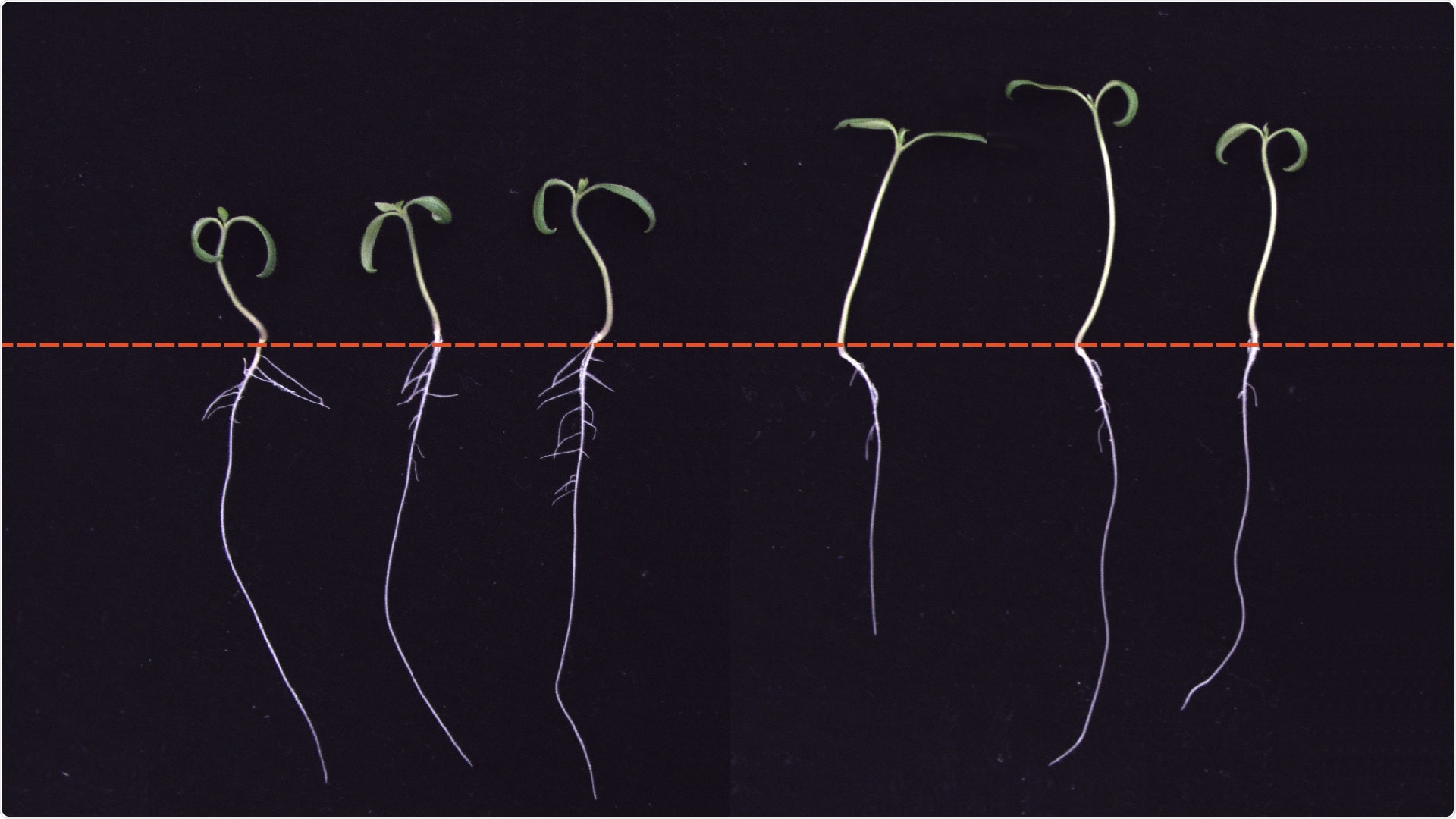Plants redirect their resources to reach for light when they find themselves in too much shade. As the plant focuses on growing taller, attempting to grow above neighboring plants to access the sun, crop yield and root development halt.

Plants depend on sunlight for photosynthesis. When they find themselves in too much shade, they will redirect their resources from root development towards stem growth, so they can grow taller and access the sun. In this image, the three plants on the left were grown in full unshaded light: they have lots of branched roots. In contrast, the three plants on the right were grown in the shade: they have less branched roots because the plant is focusing on growing a longer stem to try and reach more light. Image Credit: Daniele Rosado/Pedmale lab.
According to Cold Spring Harbor Laboratory (CSHL) Assistant Professor Ullas Pedmale, even though shade avoidance is an important survival strategy for an organism depending on photosynthesis, it is problematic for the farmers. Shade avoidance restricts the density at which farmers can plant their crops, hence limiting yields.
Because of crowding, there is a competition for sunlight—so their option is to grow taller. The plants are putting all this energy to try to grow taller, but now it’s at the expense of fruits that we depend on, biomass. Then it’s also at the expense of the roots, so the roots don’t grow.”
Ullas Pedmale, Assistant Professor, Cold Spring Harbor Laboratory
Scientists were constantly researching the shade response of plants for many years in expectations of identifying means to aid plants to flourish at greater densities. Studies mainly concentrated on changes in leaves and stems; however, Pedmale’s group wished to comprehend what happens underground when a plant is devoid of light.
It is a critical issue as plants without strong root systems are prone to flooding, droughts, and hurricanes—threats more common as a result of climate change.
Postdoctoral researcher Daniele Rosado and other members of Pedmale’s group used tomato plants and the model plant Arabidopsis and compared the roots of seedlings grown in full unshaded light to the shorter less developed roots of plants grown in shade.
The researchers identified hundreds of genes that plants employ as stress responses that were switched on in the shade-grown plants—including dozens that code proteins named WRKYs, which control gene expression.
Pedmale’s group engineered plants in which specific WRKY genes were highly active, irrespective of conditions to confirm that these genes restrict root growth. The researchers identified that plants with high levels of specific WRKY proteins grew similar stunted roots found in shade-grown plants, even when provided with abundant light.
However, the stems of the plant grew at a normal rate. Additionally, the researchers found that the plant hormone ethylene (needed for fruit ripening) can also be involved in the roots’ shade response.
Pedmale anticipates that unraveling the role of these proteins in shade avoidance can aid scientists to create better high-yielding plants—plants that can withstand extreme weather, live under more crowded conditions and even limit global warming by taking carbon dioxide out of the air and into extensive root systems.
Source:
Journal reference:
Rosado, D., et al. (2021) WRKY transcription factors and ethylene signaling modify root growth during the shade avoidance response. Plant Physiology. doi.org/10.1093/plphys/kiab493.